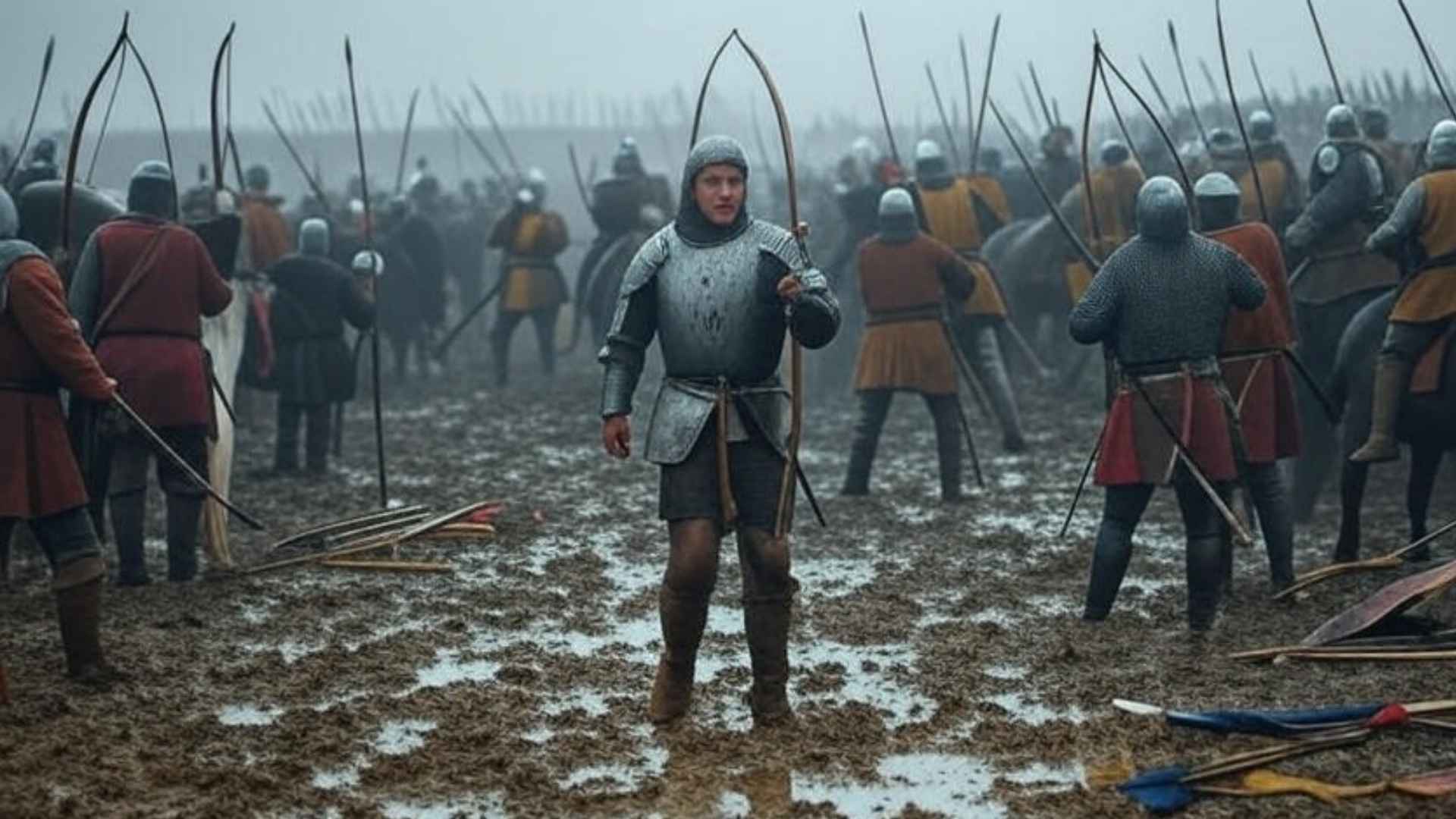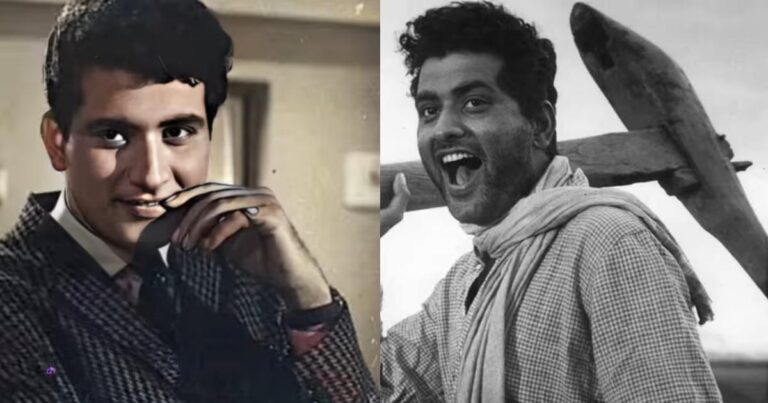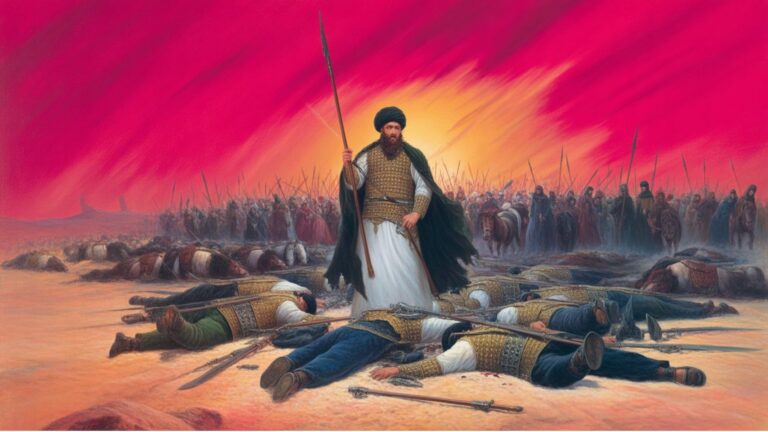The Battle of Agincourt: How 6,000 Englishmen Crushed a French Army of 30,000
The Battle of Agincourt is one of the most legendary victories in military history. Despite being outnumbered nearly 5 to 1, the English army led by King Henry V defeated a massive French force.
On October 25, 1415, during the Hundred Years’ War, King Henry V’s sick and tired English army faced a much larger French force near the village of Agincourt in northern France. Despite the odds, the English achieved a stunning battlefield victory.
Henry’s forces numbered only about 6,000 (including nearly 5,000 longbowmen) and had marched hundreds of miles from Harfleur. They were shadowed and eventually blocked by a French army estimated between 12,000 and 30,000 men, consisting mostly of heavily armored knights and infantry.
Must Read: Battle of Stalingrad: Casualties, Importance, Why Happened and Who Won
The Battle of Agincourt
English Forces
- Commander: King Henry V of England (age 28)
- Total strength: Approximately 6,000-9,000 men
- Composition:About 1,000-1,500 men-at-arms (heavy cavalry and dismounted knights)
- 5,000-7,500 longbowmen
- Small number of artillery and support troops
- Notable leaders: Duke of York, Earl of Suffolk, Duke of Gloucester
French Forces
- Commander: Constable Charles d’Albret
- Total strength: Approximately 20,000-30,000 men
- Composition:10,000-14,000 men-at-arms (heavily armored nobility)
- 4,000-5,000 crossbowmen
- Several thousand infantry and support troops
- Notable leaders: Duke of Alençon, Duke of Brabant, Count of Nevers, Marshal Boucicaut
Terrain & Tactics
The battlefield was a narrow strip of land flanked by dense woods of Tramecourt and Agincourt. The night before the battle was cold and wet, and the morning brought continued rain, turning the soil into thick mud—a critical factor that would soon favor the English.
Henry chose a narrow, muddy field between two woods. The terrain funneled the French into a tight formation, neutralizing their numerical advantage. English archers planted sharpened stakes and unleashed a deadly rain of arrows as the French advanced across the slippery ground.
Battle & Turning Point
Both armies waited for hours, with neither side wanting to attack across the muddy field. Around mid-morning, Henry V ordered his army to advance closer to the French lines and then halt. The longbowmen planted their defensive stakes and prepared for battle. The French finally advanced in their heavy armor across the muddy field.
As French knights charged, they became bogged in mud. The longbowmen’s arrows penetrated armor, horses stumbled into stakes, and chaos ensued. When arrow supplies dwindled, English archers dropped their bows and joined melee combat using swords, axes, and tools of war. Within about three hours, the French lines collapsed under relentless English onslaught.
Outcome & Casualties
The English sustained minimal losses—approximately 300–500 men—while French casualties ranged from 6,000 to over 10,000, including many high-ranking nobles like dukes and counts. The battle was a crushing psychological blow to France.
Must Read: What Can Be Used Against You In a Custody Case?
English Longbowmen: The Ultimate Game-Changer
One of the biggest reasons for England’s success was their archers, most of whom were longbowmen. Out of the 6,000 English troops, over 5,000 were archers.
- The English longbow could shoot accurately from over 250 yards.
- Archers were protected by wooden stakes planted in the ground to repel cavalry.
- Rapid volleys of arrows disrupted French formations before they even reached the English line.
French Mistakes: Overconfidence and Chaos
Despite their superior numbers, the French made several critical errors:
- They underestimated the English.
- The nobility rushed forward in disorganized waves, clogging the narrow battlefield.
- Many slipped in the mud, making them vulnerable to English arrows and hand-to-hand combat.
Their heavy armor became a burden in the mud, and fallen knights blocked others from advancing.
Significance
Agincourt became legendary as one of history’s greatest upsets. The victory boosted English morale, weakened French nobility, and led to English advances in northern France. The battle also marked a clear shift in warfare: ranged weapons like the longbow gained prominence over traditional knightly cavalry.
Shakespeare later immortalized the battle in his play Henry V, with the famous line: “We few, we happy few, we band of brothers.”
In short, Henry V’s leadership, clever choice of terrain, and disciplined archers turned the odds in his favor—proving that strategy and terrain can overcome overwhelming numbers in battle.
Must Read: Oldest Religions in the World- A Comprehensive and Detailed Overview
Final Thought
The Battle of Agincourt remains a symbol of courage, strategic brilliance, and the power of discipline over numbers. It’s a shining example of how preparation, terrain, and innovation can defeat even the largest of armies. Even today, military leaders study this battle for its lessons in leadership and tactical warfare.







